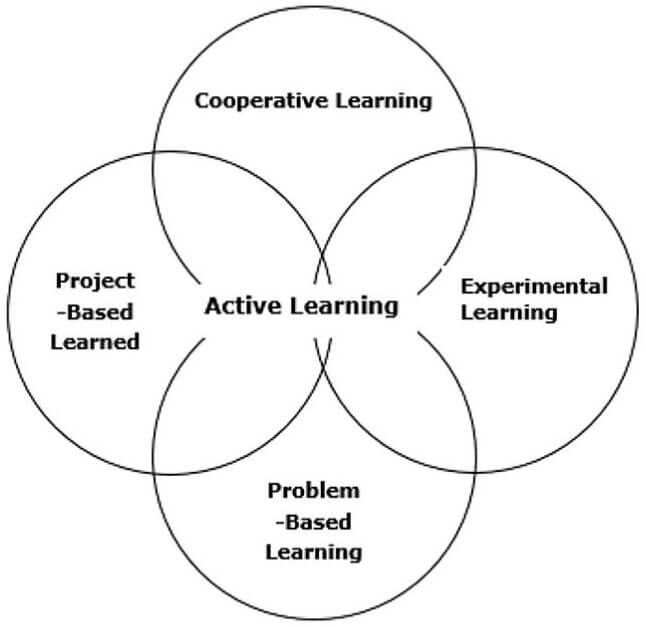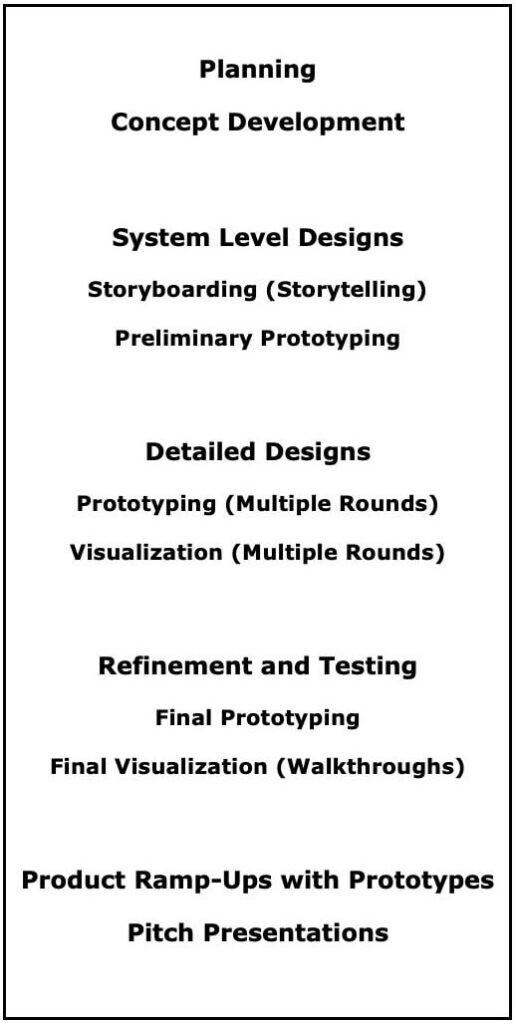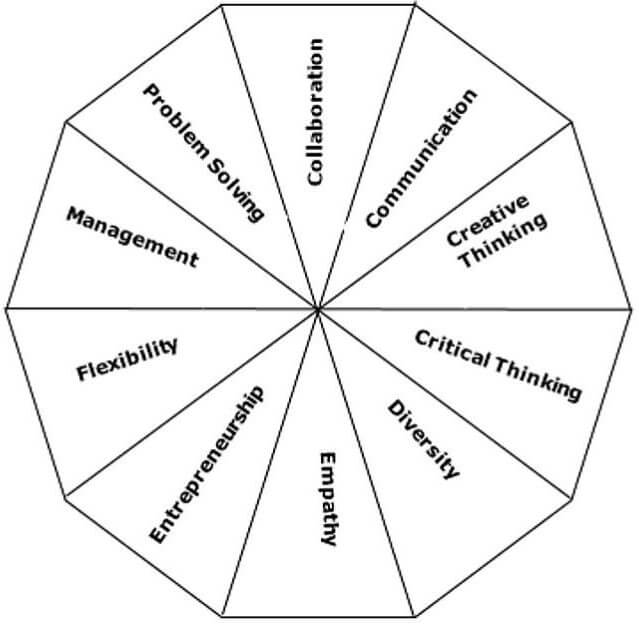Expanding Cross-Disciplinary Dialogue Through Passion-Based Public Service Projects
Published in:
November 22–23, 2019
University of Miami
Miami, Florida
Background
Collaboration across different disciplines can be a challenge. Dialogue among different schools can be a concern in the academy. A course converging disciplines for cross-disciplinary students can contribute demonstratively to discovery of diverse experiences (Barrett, 2019). Discovery of diverse knowledges can be catalyzed by a creative model for inclusion of multiple perspectives of instructors and of students. Conversation in the academy can be cultivated definitely by an exciting but focused pedagogy.
Course Design
Active authentic learning is a concept of directly engaging students in the content of courses, instead of having students listening to lectures passively (Felder & Brent, 2016a). Not enough colleges of computer science and information systems in the academy appear however to be including in their courses diverse approaches of learning, such as active collaborative learning (Schrage, 2018). The course in this presentation is Area of Knowledge (AOK) Collaborative Design and Innovation that began as a community engagement (CE) and writing enhanced (WEC) curriculum, in spring 2019, in the Seidenberg School of Computer Science and Information Systems of Pace University in New York City.
The course is an active learning experience for students.
The students are cooperatively exploring big idea products as members of leaderless self-directed teams (Sears & Pai, 2012). The dimensions of the experiences are formed from cooperative (Connolly & Rush, 2018), experiential (Noyes, 2018) and problem-based and project-based learning, as depicted in Figure 1. The experiences are formulated further from a “design factory” dialogue learning platform for interdisciplinary inventions (Bjorklund, Laakso, Kirjavainen, & Ekman, 2017).

Concurrently, the instructor, the first presenter, functions as a facilitator, not as a lecturer (“chalk and talk”), to the member students on the teams (Borst & DiYanni, 2018).
The learning objectives of the 3-credit course of 14 3-hour sessions are below:
- Experience challenges of collaborative dynamics in designs of big idea projects;
- Experience design methods on ideation processes of product storyboarding and product prototyping projects;
- Experience improved skills from interactions with cross-disciplinary students of the schools of the university on the projects;
- Experience new opportunities in perspectives on the product projects; and
- Experience pitch presentations of functional product prototyping solutions of public service.
The course is a diverse experience of hands-on learning (Abbassi & King, 2007) inclusive of information systems students, and interdisciplinary students, such as business and performing arts students, for increased learning of other perspectives of the students majoring or not majoring in technologies.
The course in fall 2019 is consisting of n=5 distinct projects of public service, decided by members of n=5 self-directed teams of n=5 members on a team. The members of the team are decided by the instructor, in order to insure diversity as feasible on the teams. The characteristics of the students by demographics are below:
- 3 (12%) African-Americans
- 11 (44%) American Caucasians
- 5 (20%) Asian-Americans
- 3 (12%) European Internationals
- 3 (12%) Hispanic-Americans
The disciplines of the students are below:
- 12 (48%) Business
- 1 ( 4%) Health
- 5 (20%) Information Systems
- 2 ( 8%) Liberal Arts
- 5 (20%) Performing Arts
The genders of the students are below:
- 7 (28%) Female
- 18 (72%) Male
The student years are below:
- 1 ( 4%) Freshman
- 8 (32%) Sophomore
- 12 (48%) Junior
- 4 (16%) Senior
The course in fall 2019 consists of an environmental food operation project, an exchange shelter operation project, a local museum sensory system of virtual reality, a municipal musical stage system and a scanner security system, for hypothetical neighborhood organizations, decided from the passions of the student teams.
From these inherently out of the box projects, the students are creating their own learning in the semester (Helle, Tynjala, Olkinvora, & Lomka, 2007).
The implementation of the public service projects is the responsibility of the student teams.
Critically, most of the students would not have engaged with the other diverse interdisciplinary students in the course on the public service projects, in the 14 semester weeks, without having been placed by the instructor on their teams (Barnes, 2019).
Course Methodology on Projects
The Collaborative Design and Innovation course methodology consists of a “design factory” (Bjorklind, et.al., 2017) rapid application development (RAD) platform, from incrementally concept development, system level designs, detailed designs, refinement and testing and product ramp-ups with prototypes on the projects, as depicted in Figure 2.

The instructor defines the expectations of the project requirements and the project prototyping results for the members of the teams and for the teams by the beginning of the 3rd semester week.
The instructor engages the members of the student teams in learning the “design factory” (Bjorklind, et.al., 2017) methodology by individually mentoring the students and collectively the teams, in the classroom sessions, in the alternate learning room spaces, and on the discussion boards of the Academic Blackboard e-Education Suite, and by furnishing materials (Addy, 2019) for the prototyping solutions if needed by the teams.
From blogs on progress of the projects, contracts on requirements, roles and results, journal reflection reports and mini-presentations of the students– as “hooks” in the literature (Reynolds & Kearns, 2017) – the instructor monitors the progress of the team projects of weekly, without intruding on the responsibilities of the public service teams, and moreover, motivates the students with escape room exercises, puzzles (e.g., the chicken, the farmer and the fox) and riddles (Stangroom, 2009) at local vendors.
At the end of the 14-semester session, the product prototyping solutions are presented as pitch presentations, or final reports, to the instructor, who is grading 50% for member performance and 50% for the performance of the team, for the consolidated fall 2019 final grades of the students averaging B+ / A-, which is highlighting the potential of the diverse teams (Gompers & Kovvali, 2018).
At the same time, the course methodology facilitates a foundation for learning a repertoire of in-demand skills, such as collaboration, communication, creative thinking, critical thinking, diversity, empathy, entrepreneurship, flexibility, management and problem-solving (Bjorklund, et.al., 2017, Gedeon & Valliere, 2018 & Felder & Brent, 2016b), as depicted in Figure 3.

From the journals of reflections of the students, in fall 2019, the interdisciplinary students highlight high learning outcomes in the full range of the desired skills.
The journals are especially highlighting higher collaboration, communication, diversity, empathy and flexibility skills for all of the students. Notably, students not previously on self-directed small teams are highlighting higher creative thinking and critical thinking skills and entrepreneurship skills. The reports indicate higher skills of the freshman and sophomore students in management and problem-solving skills, in contrast to the even high skills of the junior and senior students.
The benefits of Collaborative Design and Innovation with the “design factory” (Bjorklind, et.al., 2017) platform are continuing to be evident from these preliminary findings on the increasing potential of the students in realizing these skills (Kelley & Kelley, 2013).
Lessons Learned
The benefits of Collaborative Design and Innovation can be achieved by other faculty in the academy from the lessons learned in fall 2019:
- The course design for dialogue from the cross-disciplinary diversity of the students, in learning from the other students (Canham, Wiley, & Mayer, 2012), is contributing to the favorable formation of the multidisciplinary projects.
- The engagement of the students in the escape rooms and in the exercises of puzzles and riddles in informal project teams (Stangroom, 2009) is contributing to the eventual formation of the projects on the final formal teams.
- The engagement of the instructor initially with students not previously on interdependent project teams is contributing to the involvement of most of these students in opting in spiritedly on the tasks of their teams.
- The expectations of the instructor as to the operating procedures and the project standards for the students and the teams, at the beginning of the semester, is enabling the teams to function interdependently (Knutson, 2018) as leaderless self-directed teams;
- The functioning of the instructor not as a lecturer but as a mentor to the students is enabling more project responsibilities and public service results of the self-directed teams, but is necessitating more involvement as a motivator to the students and to the teams (Miller, 2018), especially “free loader” or “free rider” students on the teams.
- The inclusion of blogs on project progress, critiques on practitioner and scholarly publications and journals of reflection reports (Barbour, 2019), and mini-presentations on project progress, as requirements of the students, is enabling the instructor in monitoring the progress of the students and the teams.
- The inclusion of contracts for the requirements and for the results of each of the students is also facilitating the monitoring of the progress of the students on the teams.
- The integration of practitioner publications, such as Entrepreneur and Fast Company, and scholarly publications, such as Journal of Social Entrepreneurship, is facilitating the learning of models of projects and results, in the public sector, for the students and teams.
- The students are learning a repertoire of skills in dialogue, as generalists not as specialists or technologists (Epstein, 2019), with other students on the teams that is not typical in other pedagogies of study (Liedtka, 2018).
- Though the course resides in a school of computer science and information systems, the cross-disciplinary diversity of most of the students, including groups of historically marginalized students, is resulting in mostly passion-based public service solutions (Bjorklund, et.al., 2017) of vision other than pure technologies.
These lessons learned by the presenters in Collaborative Design and Innovation in the fall 2019 semester can be applied by other instructors considering courses for cross-disciplinary dialogue.
Conclusion
The concept of the course can be beneficial to faculty considering courses for catalyzing cross-disciplinary dialogue in the academy. The course design embofies an innovative methodology of self-directed teams involving multiple perspectives of students on public service projects (Singer, 2019). In short, this course offers instructors an exhilarating but inclusive participative pedagogy promoting proactive, instead of merely responsive, roles for multidisciplinary students in the academy — all students contribute and converse and help others do things.
References
Abbassi, B., & King, R. (2007). The development of a teaching strategy for implementing a real-world business project into database courses. Journal of Information Systems Education, 18(3), 337-343.
Addy, T. (2019). What two students want you to know about inclusive teaching. Faculty Focus, June, 1-13.
Barbour, B. (2019). The power of short writing assignments: Brief writing prompts and responses help students in any discipline. Edutopia, August, 1-5.
Barnes, E. (2019). Intercultural dialogue partners: Creating space for difference and dialogue. Faculty Focus, January, 3.
Barrett, J. (2019). Expanding the pipeline: The 2019 ACM Richard Tapia celebration of diversity in computing conference. Computing Research News, 31(10), 1-4.
Bjorklund, T.A., Laakso, M., Kirjavainen, S., & Ekman, K. (2017). Passion-based co-creation. Helsinki, Finland: Kirjapaino Bookcover, Aalto University.
Borst, A., & DiYanni, R. (2018, November 16). Approaches to active learning: Sharing strategies for student engagement. Presentation at the New York University (NYU) Faculty Resource Network (FRN) National Symposium, Orlando, Florida.
Canham, M., Wiley, J., & Mayer, R. (2012). When diversity in training improves dyadic problem-solving. Applied Cognitive Psychology, 26, 421-430.
Connolly, A.J., & Rush, D. (2018). Cooperative learning activities for introduction to management information systems (MIS). Proceedings of the Educators Special Interest Group (EDSIG) Conference on Information Systems & Computing Education, Norfolk, Virginia, November.
Epstein, D. (2019). Range: Why generalists triumph in a specialized world. New York, New York: Riverhead Books.
Felder, R.M., & Brent, R. (2016a). Teaching and learning STEM: A practical guide. San Francisco, California: Jossey-Bass, 112-113.
Felder, R.M., & Brent, R. (2016b). Teaching and learning STEM: A practical guide. San Francisco, California: Jossey-Bass, 189-212,221-237,272-278.
Gedeon, S.A., & Valliere, D. (2018). Closing the loop: Measuring self-efficacy to assess student learning outcomes. Entrepreneurship Education and Pedagogy, 1(14), 272-303.
Gompers, P., & Kovvali, S. (2018). The diversity dividend. Harvard Business Review. July-August, 72-77.
Helle, L., Tynjala, P., Olkinvora, E., & Lonka, K. (2007). Nothing like a real thing: Motivation and study processes on a work-based project course in information systems design. British Journal of Educational Psychology, 77(2), 397-411.
Kelley, T., & Kelley, D. (2013). Creative confidence: Unleashing the creative potential within us all. New York, New York: Crown Business.
Knutson, J. (2018). Setting up effective group work. Edutopia, January, 1.
Liedtka, J. (2018). Why design thinking works. Harvard Business Review, September-October, 72-79.
Miller, A. (2018). Planning for project-based learning implementation. Edutopia, January, 1,3.
Noyes, E. (2018). Teaching entrepreneurial action through prototyping: The prototype-it challenge. Entrepreneurship Education and Pedagogy, 1(11), 128.
Reynolds, H.L., & Kearns, K.D. (2017). A planning tool for incorporating backward design, active learning, and authentic assessment in the college classroom. College Teaching, 65(1), 20.
Schrage, S. (2018). Massive study finds lectures still dominate STEM education. Faculty Focus, May, 1-13.
Sears, D.A., & Pai, H.H. (2012). Effects of cooperative versus individual study on learning and motivation after reward-removal. The Journal of Experimental Education, 80(3), 246-262.
Singer, N. (2019). Universities join cause: Technology for public good. The New York Times, March 12, B3.
Stangroom, J. (2009). Einstein’s riddle: Riddles, paradoxes and conundrums to stretch your mind. New York, New York: Bloomsbury.
Spring 2020: Critical Conversations and the Academy
